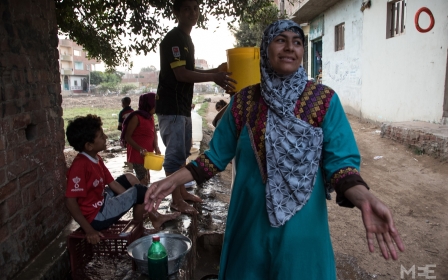Nile 2050: A billion people at risk from floods and droughts

The Nile – source of water for millions – is under severe pressure.
According to UN estimates, the population of countries in the Nile river basin is expected to more than double in the years to 2050 to nearly one billion, putting scarce water resources under ever greater strain.
'It’s not abstract. This is happening now'
- Professor Elfatih Eltahir
Now a new report indicates that climate change is going to add to what is a fast developing crisis along one of the world’s great rivers.
Global warming means the river’s water levels will become ever more unpredictable says the report by academics at the Massachusetts Institute of Technology (MIT), resulting in what could be devastating floods one year and withering drought the next.
“It’s not abstract,” says Professor Elfatih Eltahir, one of the report’s authors. “This is happening now.”
Not so pacific impact
Eltahir and his fellow researchers say the main cause for this growing variability in the level of the Nile’s waters lies thousands of miles away, in the Pacific Ocean.
The MIT report warns that there will be substantially fewer 'normal’ years when the Nile flows conform to traditional patterns
Global warming, primarily the result of the millions of tonnes of carbon dioxide emissions and other greenhouse gases we are loading into the atmosphere each year, is causing an increase in the intensity and duration of the Pacific Ocean phenomenon known as the El Nino/La Nina cycle.
This cycle is a big influence on annual rainfall patterns in the highlands of Ethiopia and adjacent areas – regions which generate about 80 percent of the Nile’s total flow.
Climate change is now disrupting those age-old ways.
The MIT report says that if the world continues on a "business as usual" trajectory, with no major reductions in greenhouse gas emissions over coming years, it’s likely that changing rainfall patterns will lead to an average increase of between 10 and 15 percent in the Nile’s annual flow.
Yet unless water levels are properly managed and storage and releases from the various dams and reservoirs along the Nile are coordinated, there will be flooding in many areas.
Beyond the dam
The MIT report warns that there will be substantially fewer “normal" years when the Nile flows conform to traditional patterns – there will be greater extremes and more years of drought say the researchers.
Professor Eltahir and his fellow researchers hope their findings will lead to long-term policies for managing the river.
But battles for control of the Nile have been going on for many years. The river, the world’s longest, flows through 10 countries. Africa’s largest dam, the Grand Ethiopian Renaissance Dam, or GERD, is now being built near the border between Ethiopia and Sudan.
The MIT report says that instead of arguing about the dam, more focus should be given to the potential impacts of climate change and population growth along the Nile.
“We think that climate change is pointing to the need for more storage capacity in the future,” says Eltahir. “The real issues facing the Nile are bigger than that one controversy surrounding that dam.”
- Kieran Cooke is a former foreign correspondent for the BBC and the Financial Times, and continues to contribute to the BBC and a wide range of international newspapers and radio networks.
The views expressed in this article belong to the author and do not necessarily reflect the editorial policy of Middle East Eye.
Photo: Egyptians take a dip in one of the branches of the Nile in the Menufiya district, north of the capital Cairo, on 2 May 2016, as they celebrate Sham al-Nessim, a Pharaonic feast that marks the start of spring. (AFP)
This article is available in French on Middle East Eye French edition.
Stay informed with MEE's newsletters
Sign up to get the latest alerts, insights and analysis, starting with Turkey Unpacked
Middle East Eye delivers independent and unrivalled coverage and analysis of the Middle East, North Africa and beyond. To learn more about republishing this content and the associated fees, please fill out this form. More about MEE can be found here.









